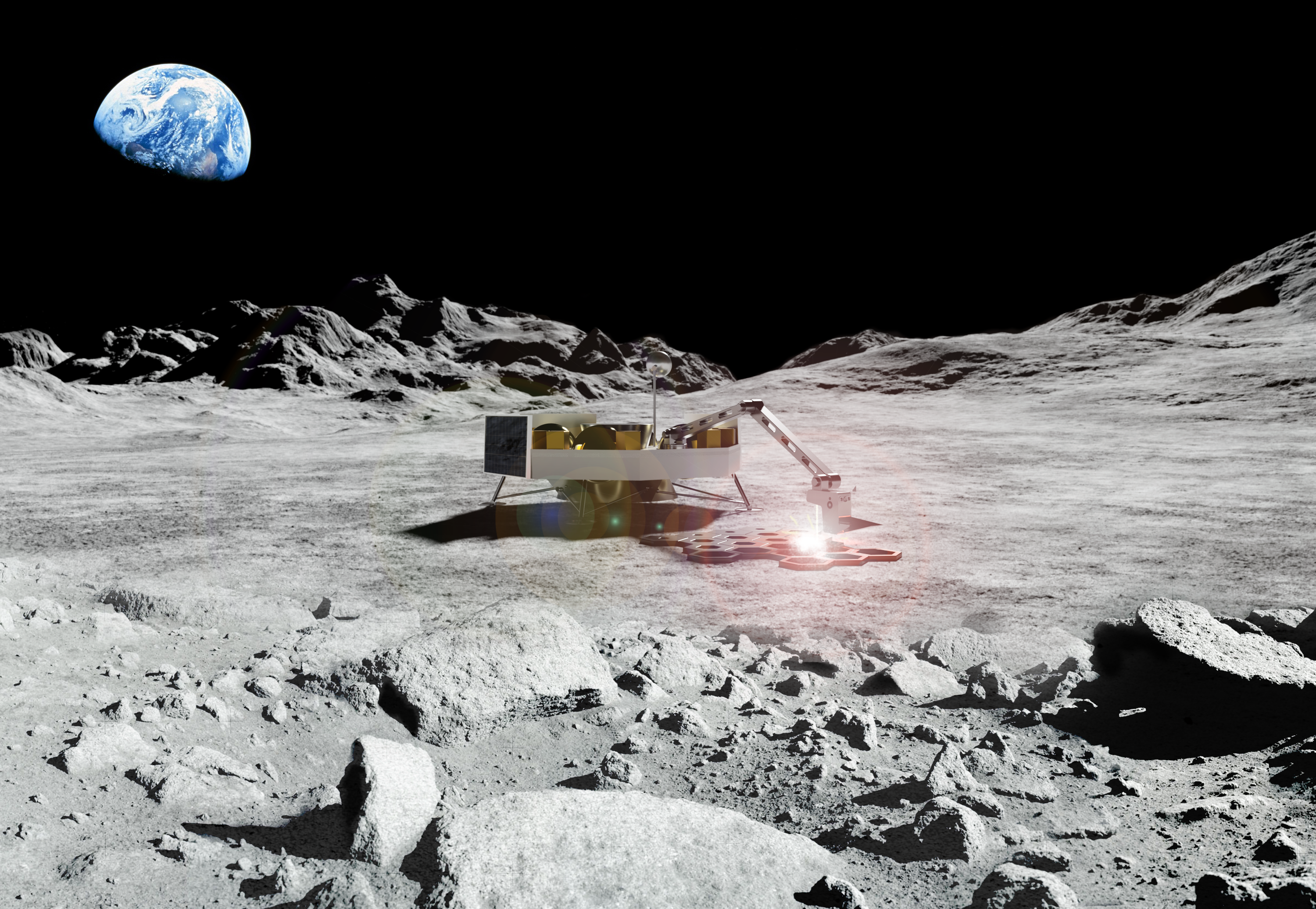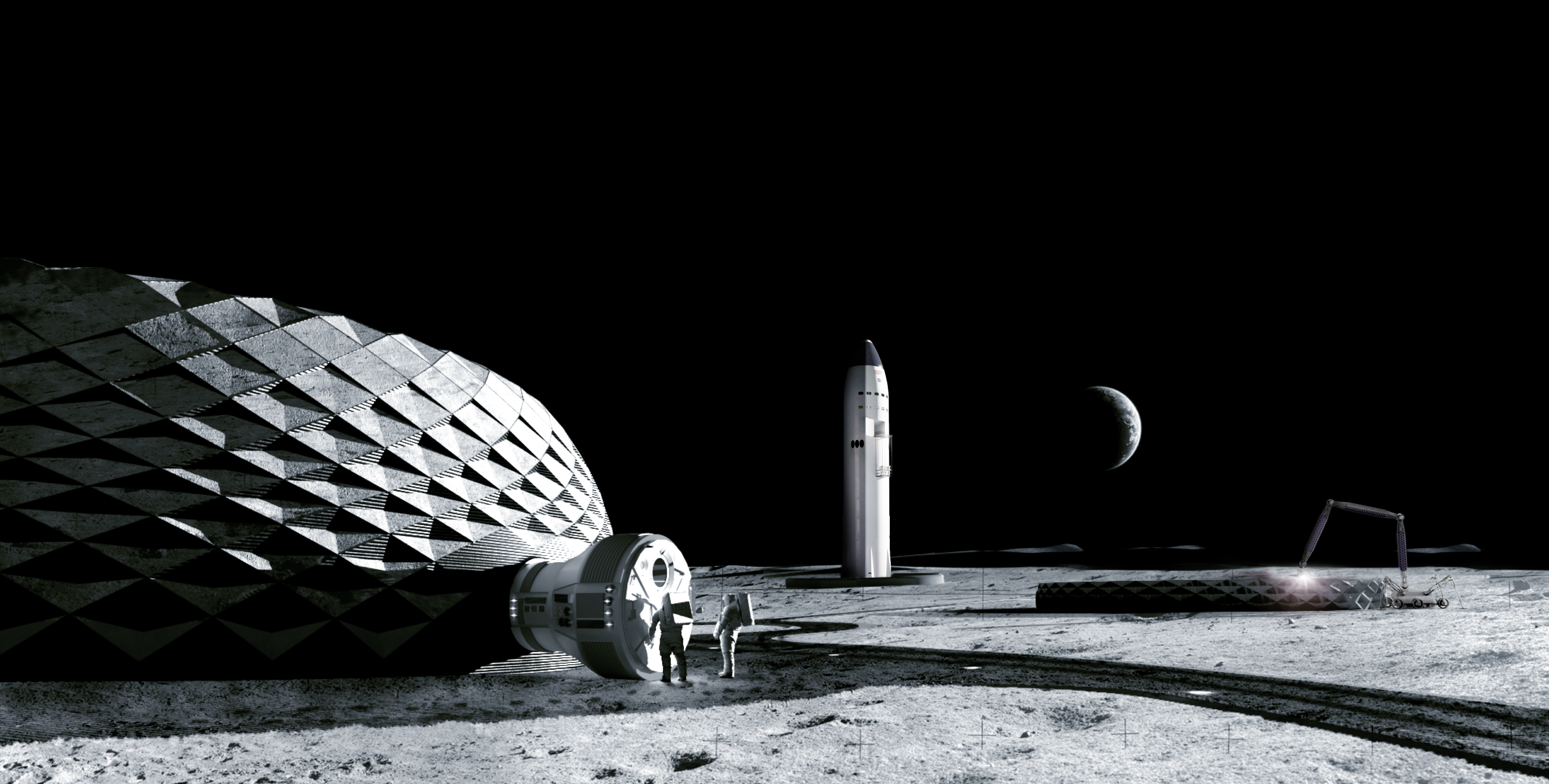It’s been quite the year for additive construction developer ICON. The Austin-based tech company’s seamless integration of advanced construction technologies into homebuilding spearheads faster and more accurate construction of complex or bespoke structures. Since ICON arrived in the 3D printing scene with the first permitted 3D printed home in the US during the SXSW event in March 2018, this engineering trend has evolved.
Not only has ICON partnered with the Texas Military Department to build the largest 3D printed barracks in the country or teamed up with homebuilding giant Lennar to build a 100-home community in Texas, but it has even worked with NASA to design and construct a reusable landing pad that could be 3D printed with materials found on the Moon. This last collaboration may have resonated a lot lately, especially with the first Artemis launch bringing humanity one step closer to returning to the Moon. On the heels of this milestone, ICON has just announced a new contract that will target the first construction on another planetary body.
ICON revealed on November 2022 it had won a Small Business Innovation Research (SBIR) Phase III contract worth $57.2 million to research and develop a lunar surface additive construction system.
 Rendering of the lunar construction system. Image courtesy of ICON.
Rendering of the lunar construction system. Image courtesy of ICON.The new contract builds upon previous NASA and Department of Defense (DoD) funding for ICON’s Project Olympus, a multi-purpose construction system for off-world developments expected to leverage in-situ resources as building materials to further the efforts of NASA and commercial organizations to establish a sustained lunar presence.
“To change the space exploration paradigm from ‘there and back again’ to ‘there to stay,’ we’re going to need robust, resilient, and broadly capable systems that can use the local resources of the Moon and other planetary bodies. We’re pleased that our research and engineering to date has demonstrated that such systems are indeed possible, and we look forward to now making that possibility a reality,” said Jason Ballard, ICON co-founder and CEO.
Under the coveted third phase SBIR program, ICON, in partnership with NASA, will continue to pioneer methods and technologies to solve some of the most vexing construction challenges facing our species, from affordable housing to living on other planets. The company said that NASA’s award is a vote of confidence in a young, growing company and its mission to revolutionize the construction industry both on and off Earth.
In support of NASA’s Artemis program, ICON plans to bring its advanced hardware and software into space via a lunar gravity simulation flight. The construction startup also intends to work with lunar regolith samples brought back from Apollo missions and various regolith simulants to determine their mechanical behavior in simulated lunar gravity. These findings will yield results that inform future lunar construction approaches for the broader space community, including critical infrastructures like landing pads, blast shields, and roads.
This upcoming technology will help to establish the critical infrastructure necessary for a sustainable lunar economy, including, eventually, longer-term lunar habitation. According to Ballard, the final deliverable of this contract will be humanity’s first construction on another world. Running through 2028, the ICON contract will allow the company to work with NASA’s Marshall Space Flight Center in Huntsville, Alabama, under STMD’s Moon to Mars Planetary Autonomous Construction Technologies (MMPACT) project, which addresses lunar surface construction.
NASA has signaled that, through the Artemis program, the Moon will be the first off-Earth site for sustainable surface exploration, which is why building a sustainable presence on the Moon requires more than rockets.
 Aerial rendering of the lunar construction system. Image courtesy of ICON.
Aerial rendering of the lunar construction system. Image courtesy of ICON.Scientists have been exploring what it would take to live off-Earth for a long time, and conclusively, living on the Moon will not be easy. Before the first crew survives in one of the most hazardous spaces known to humankind, many challenges must be solved on Earth. While Apollo astronauts inhabited the Moon for only a few days, the highly anticipated crewed Artemis missions will last longer, which could severely affect human health. Not only will crews have to face the toxic moondust, but also radiation, low gravity, and a colder and longer lunar night than on Earth.
Robust infrastructure will need to be built on the Moon to provide better thermal, radiation, and micrometeorite protection. For that to happen, ICON’s development plans follow a “live off the land” approach by prioritizing using native materials found on site called regolith.
 Rendering of in-situ resource utilization lunar construction system and habitat. Image courtesy of ICON.
Rendering of in-situ resource utilization lunar construction system and habitat. Image courtesy of ICON.Discussing some critical issues about ICON’s upcoming technology, NASA Space Technology Mission Directorate (STMD)’s Director of Technology Maturation, Niki Werkheiser, believes that “to explore other worlds, we need innovative new technologies adapted to those environments and our exploration needs.” Furthermore, she feels that pushing this development forward with NASA’s commercial partners will create the capabilities needed for future missions.
From landing pads to habitats, humans will require collective efforts to survive off-Earth. With companies like ICON on board and ready to support the space agency’s plans for exploring the Moon, Mars, and beyond, delivering the technologies that will build entire ecosystems in space feels more real than ever. Although today, NASA is heavily encouraging new ideas and innovations for space, ICON has proved itself already, having received a subcontract to deliver the world’s first and only simulated Mars surface 3D-printed habitat and helping create a lunar landing pad that has been tested on Earth. With so much going on at ICON, it is inevitable to imagine that this startup will continue to mature off-Earth applications for potential sustainable lunar missions and develop technology with shared agency benefits for Earth and space.
Subscribe to Our Email Newsletter
Stay up-to-date on all the latest news from the 3D printing industry and receive information and offers from third party vendors.
Print Services
Upload your 3D Models and get them printed quickly and efficiently.
You May Also Like
Heating Up: 3D Systems’ Scott Green Discusses 3D Printing’s Potential in the Data Center Industry
The relentless rise of NVIDIA, the steadily increasing pledges of major private and public investments in national infrastructure projects around the world, and the general cultural obsession with AI have...
3DPOD 260: John Hart on VulcanForms, MIT, Desktop Metal and More
John Hart is a Professor at MIT; he´s also the director of the Laboratory for Manufacturing and Productivity as well as the director of the Center for Advanced Production Technologies....
Etsy Design Rule Change Reduces Selection of 3D Printed Goods
Online marketplace Etsy has implemented a rule change requiring all 3D printed goods on the site to be original designs. The update to the site’s Creativity Standards states, ¨Items produced using...
E-Beam OEM Wayland Additive Partners with USC Racing to 3D Print Titanium Exhaust Collector
Every year, standards organization SAE International holds a competition called Formula SAE, in which students from both undergraduate and graduate programs design, build, and race small formula-style race cars. For...

































